| 1 | Mexican west coast rattlesnake |
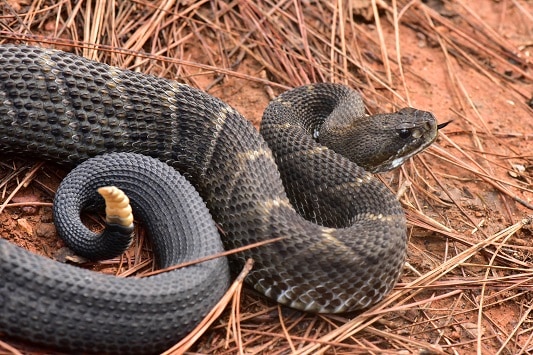
This species does exactly what it says on the label. The Mexican west coast rattlesnake (Crotalus basiliscus) resides solely in Mexico, never coming close to the US border. They’re found only along the western coast of central Mexico, primarily in dry open areas with an abundance of thorny shrubs.
Crotalus basiliscus has one major claim to fame: being one of the largest rattlesnakes worldwide. The longest ever measured a jumbo 204.5cm, which is over twice the record for a tiger rattlesnake (91.2cm). With this brute size comes a generous splashing of venom, as Crotalus basiliscus injects an average of 297mg per bite. Luckily, this venom is relatively mild. It requires 4 times the dosage of a fer-de-lance to begin causing necrosis, and four times the dosage of a western diamondback rattlesnake to kill a human.
The main symptoms of Mexican west coast rattlesnake venom are blood clotting disorders (coagulopathy) and life-threatening arrhythmia, i.e. a heart beating unsustainably fast. One 57 year old victim had a heartbeat of 136BPM. His blood pressure also plummeted, within just one hour of being bitten. Ultimately, he was saved with ease by a helping injection of antivenom.
| 2 | Tancitaran dusky rattlesnake |
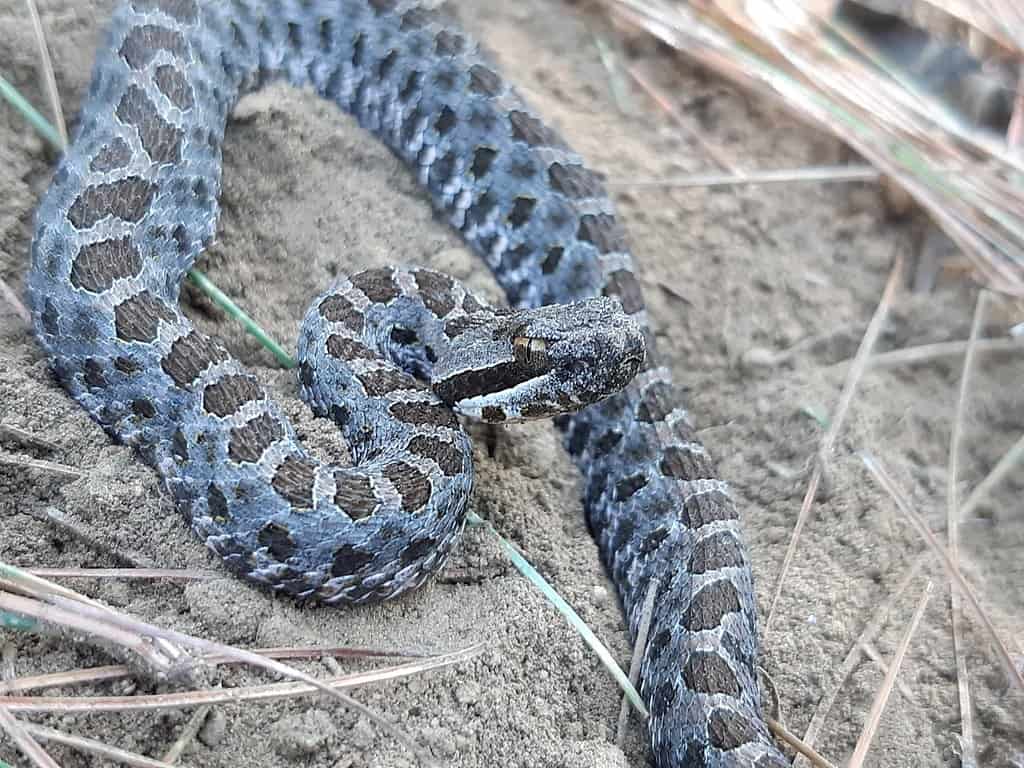
One of the more vicious rattlesnakes in Mexico. The Tancitaran dusky rattlesnake (Crotalus pusillus) lives at altitudes of 1525-2830 metres, particularly in grassy clearings adjacent to forests. They appear exclusively in the high mountains of southern Mexico, west of Mexico City. This species begins shaking its rattle furiously the moment humans first approach. They have no qualms about biting, whether it’s a thick leather shoe or a scientist’s steel tongs.
Tancitaran dusky rattlesnakes can be hard to notice, as they have a particular liking for shelter. Fallen logs, rocks, the shade of agave plants, and even corn rows in agricultural fields are all common places for them to lurk. Despite their aggression, their venom is one of the weakest of any rattlesnake. In a study comparing their toxin soup to red diamond, twin-spotted, ridge-nosed and Mexican pygmy rattlesnakes, Crotalus pusillus ranked in last for lethality.
This is mainly a day-faring rattlesnake. Tancitaran rattlesnakes are most commonly sighted at 12:00pm, once the sun has burnt off the early morning mountain mist. This species is especially attracted to volcanic rock formations. Tancitaran dusky rattlesnakes are one of Mexico’s smaller species, reaching a maximum of just 68.2cm, so their high aggression levels are most likely a way to compensate.
| 3 | Baja California rattlesnake |
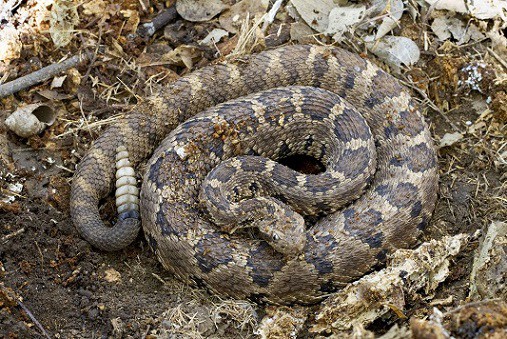
This rattlesnake is found exclusively in Baja California, the finger-like peninsular that extends southwards from US California. This is a short species, with an all time record of 89.8cm, and their venom yield is also unusually low. Their venom sticks to the rattlesnake standards, disabling blood clotting and triggering spontaneous haemorrhaging around the body.
Baja California rattlesnakes (Crotalus enyo) are 100% nocturnal, and are very difficult to find in the wild, except when crossing roads. They prefer drier spots, and their favourites are proven to be dry shrubland, where they can hide themselves from roving predators. According to a study on 113 Baja California rattlesnakes, their diet consisted of 60.3% mammals, 33.3% reptiles and 6.4% centipedes.
Crotalus enyo is far from the deadliest rattlesnake, but a study compared its venom toxicity to 3 other Baja California species. The southwestern speckled rattlesnake had the strongest LD50 toxicity rating at 0.35mg, while Crotalus enyo came in second at 1.56mg, outstripping a cottonmouth. The Santa Catalina rattlesnake came third (2.98mg), while the weakest by far was the red-diamond rattlesnake (9.21mg).
| 4 | Querétaro dusky rattlesnake |

One of Mexico’s smallest rattlesnakes. This species has a record length of 68.1cm, and an average of 50cm, although they compensate with a thick body. Crotalus aquilus is also a rare rattlesnake to prey on other snakes, as well as mammals and lizards. Confirmed prey in their diet include Mexican bullsnakes, an unidentified garter snake, crevice swifts (Sceloporus torquatus), and Mexican voles.
Querétaro dusky rattlesnakes avoid coastlines, and stick to the rolling central Mexican plateau instead. This is a high altitude rattlesnake, which can climb to 3310 metres above sea level. Their main habitat is pine-oak forests, and within those forests, they’re particularly common in rocky outcrops, where they bask in the sun’s warm glow to heat their cold-blooded reptilian bodies. Querétaro rattlesnakes also appear in grassy mountain meadows. This is a relatively calm rattlesnake, which is usually reluctant to bite, but one population in El Chico National Park is said to be unusually aggressive.
Crotalus aquilus adapts well to manmade habitats, often appearing in pasture land and the borders of crop fields. Another tendency is for males to duel each other in warring combat, most likely to win the attention of females. Whether these battles happen on mountaintops in a raging storm hasn’t been confirmed.
| 5 | Totonacan rattlesnake |
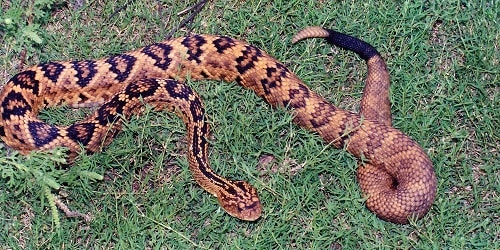
One of Mexico’s larger rattlesnakes. The Totonacan rattlesnake lives in central Mexico, and reaches a maximum of 166.5cm, with an average of 150cm. This is a highly flexible rattlesnake, with a durable serpent body equipped for survival in many different habitats. Totonacan rattlesnakes appear in scrub desert, cloud forests, dry thorn forests, deciduous forests, and pine-oak forests alike, at altitudes ranging from 450 to 1925 metres. Their one preference is for slightly drier habitats, like most rattlesnakes.
Totonacan rattlesnakes mainly eat mammals, and are cursed with an eternal hunger for squirrels that they can barely satisfy. Species confirmed in their diet include Allen’s tree squirrel and rock squirrels (Otospermophilus variegatus).
This species is recognisable by a particularly sharp contrast between their pale and dark scales. The pale scales vary from beige to orange, while the dark scales can be almost black. As the tail approaches, the colours gradually fade, until suddenly switching to dark black when the tail arrives. Their rattle scales (which they bash together musically) are light beige, except the first one after the tail, where the black colour leaches in slightly.
| 6 | Mexican pygmy rattlesnake |
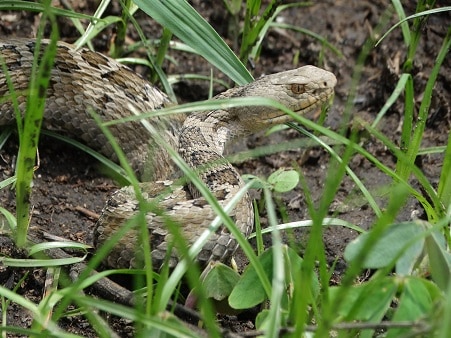
One of the most social Mexican rattlesnakes. The Mexican pygmy rattlesnake (Crotalus ravus) has been witnessed gathering together in groups of 100. This is another high altitude species, which has a mainly hemolytic venom, destroying red blood cells and causing their contents to leach.
Crotalus ravus reaches a maximum of just 70cm, but has flexible habitats, ranging from pine-oak forests to dry landscapes of agave and cacti. Within their territory, which lies in south central Mexico, they’re a commonly encountered snake. One of their bases is the countryside surrounding the Mexican city of Huitzilac, which lies at 2560 metres above sea level. Certain fields here are so swarming with Crotalus ravus that the locals don’t dream of entering them. Mexican pygmy rattlesnakes are also found at lower elevations, but become rarer and spread out, more dispersed.
Crotalus ravus was originally placed in the Sistrurus family, the same as the pygmy rattlesnake of Florida. However, recent analysis reveals that their closest relative in the USA is actually the rock rattlesnake. Recently, an antibacterial chemical was discovered in Mexican pygmy rattlesnake venom, which destroyed the stubborn microorganism Pseudomonas aeruginosa.
| 7 | Mexican lance-headed rattlesnake |
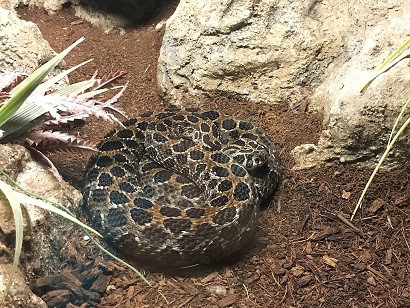
This 60-70cm rattlesnake (max 100cm) lives in central Mexico, inhabiting a wide swathe of territory. Their preferred habitat is grassy highlands, ranging from 1450 to 2600 metres above sea level.
The Mexican lance-headed rattlesnake (Crotalus polystictus) has unusually long fangs relative to its body length. Its venom is nasty, but not a patch on the tiger rattlesnake’s. A bite case from 1982 saw a man experience twitching muscles, swelling, and a small patch of necrotic flesh, which healed after being injected with antivenom.
This is also one of the most heavily mammal-eating rattlesnakes, as a study analysing 545 food items found that 87.9% were mammals. Many individual mammal prey have been spotted, including Buller’s pocket gopher, southern pocket gophers, northern pygmy mice, and Mexican voles.
Crotalus polystictus is a rare rattlesnake in that its venom becomes deadlier with age. As a newborn, the main ingredient is neurotoxic PLA2s, which are gradually replaced with metalloproteinases in adulthood. These cause more physical skin tissue destruction, but are less fatal. This higher lethality is probably to compensate for the younglings’ smaller size.
| 8 | Northwestern neotropical rattlesnake |
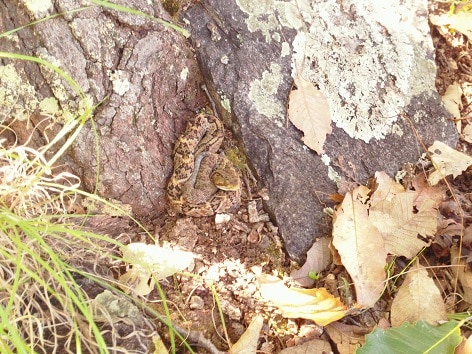
This species is misleadingly named, as it actually lives in southern Mexico, where it occupies a large swathe of territory. Northwestern neotropical rattlesnakes (Crotalus culminatus) reach up to 180cm, and are mainly nocturnal, moving under cloak of darkness when nobody can see them. This rattlesnake is one of the most forest-loving, hiding on the forest floor amidst rotting leaves and loose rocks. Their favourite habitats include thorn woodland, arid scrub forest, dry tropical forests and nearby limestone outcrops.
Crotalus culminatus is particularly common along Mexico’s southern Pacific coast, just fizzling out before reaching the Guatemalan border. This is one of the least neurotoxic rattlesnakes, as they completely lack the crotoxin possessed by several of their relatives.
Instead, Crotalus culminatus venom contains crotamine, a myotoxin which attacks muscle cells, and can fully paralyse the hind legs of mice. Crotamine makes up 6% of the venom mixture as an adult and 1% as a youth. The diet of Crotalus culminatus is mysterious, but most sightings so far have been rodents, including the spiny pocket mouse.
| 9 | Mexican small-headed rattlesnake |
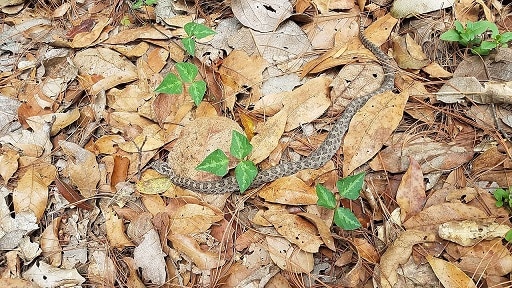
This rattlesnake is a lover of pine-oak forests at high altitudes, with some being observed at 3200 metres. Its heartlands are central southern Mexico, where they’re commonly found on steep hillsides, resting under rocks after a heavy rain. High altitude desert areas at 2000 metres are also possibilities, surrounded by cacti, yucca and agave plants. The Mexican small-headed rattlesnake (Crotalus intermedius) is able to live on particularly steep mountain slopes, interspersed with rocky ridges.
This species has a dietary speciality of lizards, particularly those of the spiny lizard (Sceloporus) family. With other rattlesnakes muscling in on the rodent niche, this species went in a freer direction, with more spoils to choose from. It venom mostly consists of metalloproteineases, shock and awe weapons which digest skin cells and cause massive tissue chaos. Neurotoxins are few and far between. They’re called the small-headed rattlesnake, but they also have a short body length, with 40-50cm being the norm, with a maximum of 57cm in the wild (sometimes longer in captivity).
Crotalus intermedius is believed to reproduce at a very slow rate. Fortunately, they’re quite widespread, and are assigned to “Least concern” by IUCN, with a stable population trend.
| 10 | Cross-banded mountain rattlesnake |
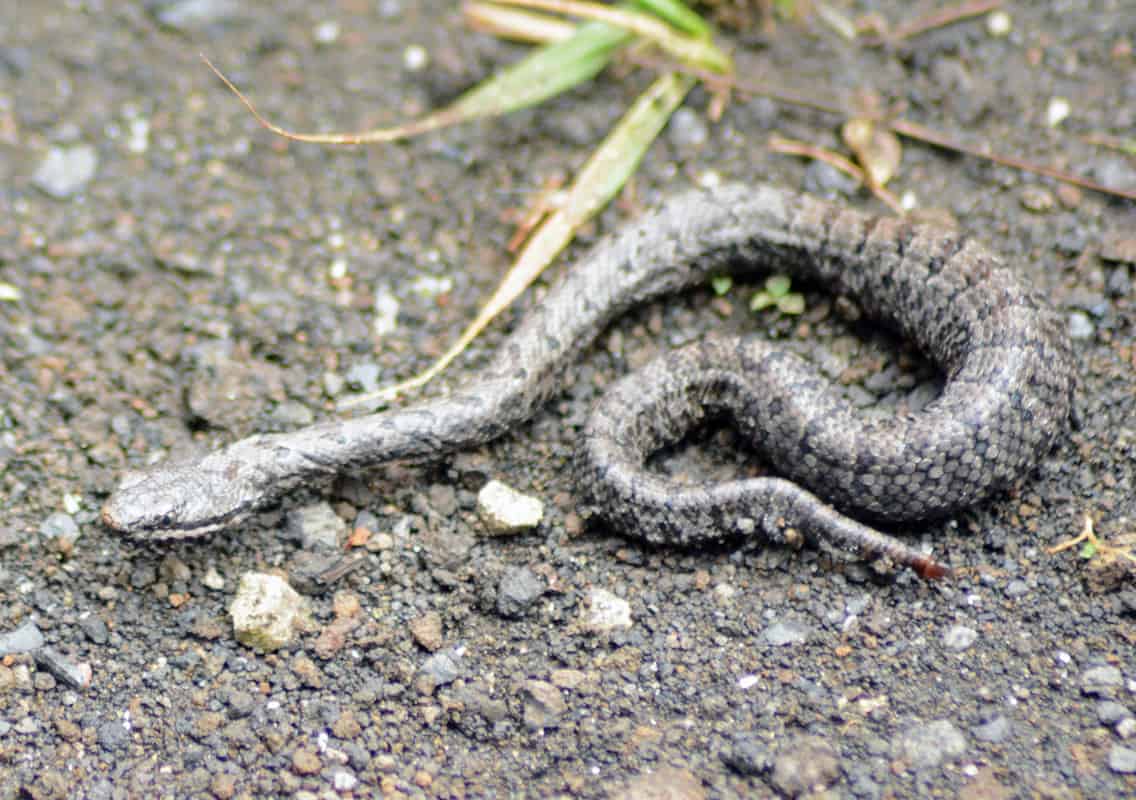
One of Mexico’s most obscure rattlesnake species. From its discovery in 1942 until 1971, just three were found, and less than 20 have been found overall. This is another high altitude species, inhabiting two mountain ranges of southern Mexico: the Sierra de Monte Alto and Sierra Ajusco. Its closest relative is the Mexican small-headed rattlesnake, and the two are believed to have diverged 5.33 and 3.6 million years ago.
The cross-banded mountain rattlesnake (Crotalus transversus) is a fairly calm species, which is reluctant to rattle its tail even when cornered. They default to fleeing over intimidation, despite their segmented rattle scales being as well developed as ever. So far, the longest recorded female measured just 46.5cm (although the sample size is still small).
Cross-banded mountain rattlesnakes live in pine-oak forests with a moderately thick understory, the sort of scenic place you’d love to explore if it wasn’t for rumours of venomous snakes lurking. They eat a healthy mixture of rodents and lizards, including Sceloporus aeneus, the southern bunchgrass lizard.
